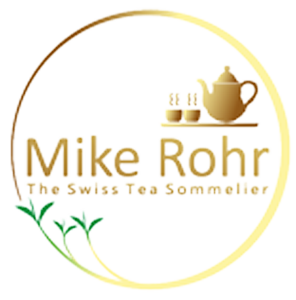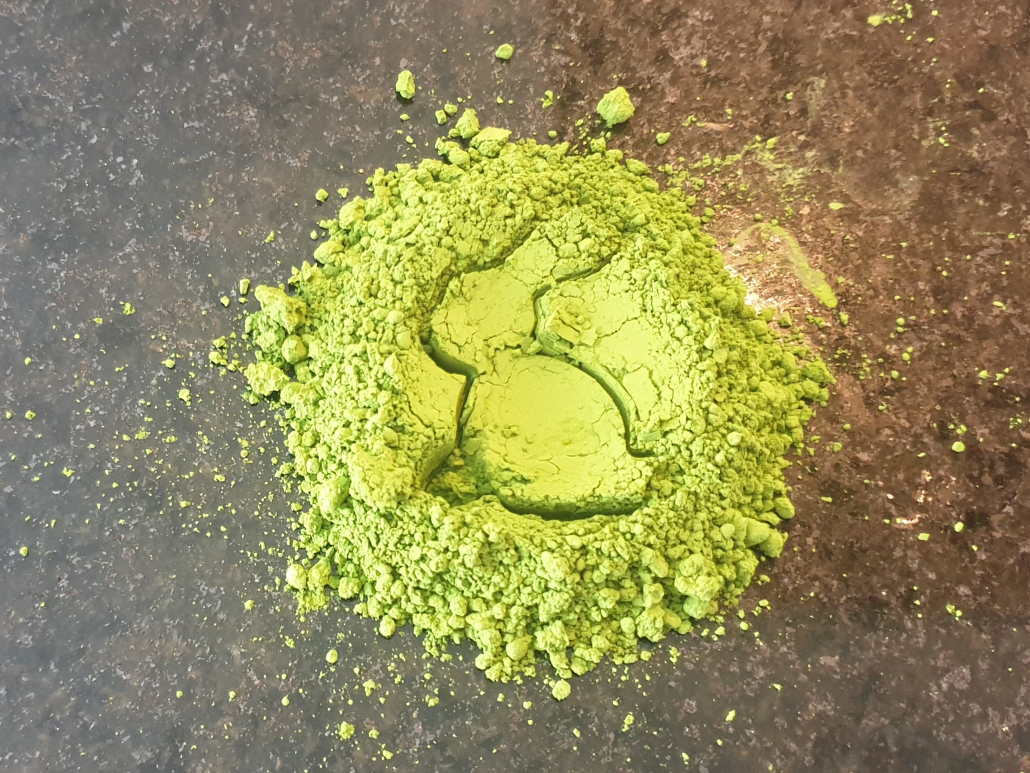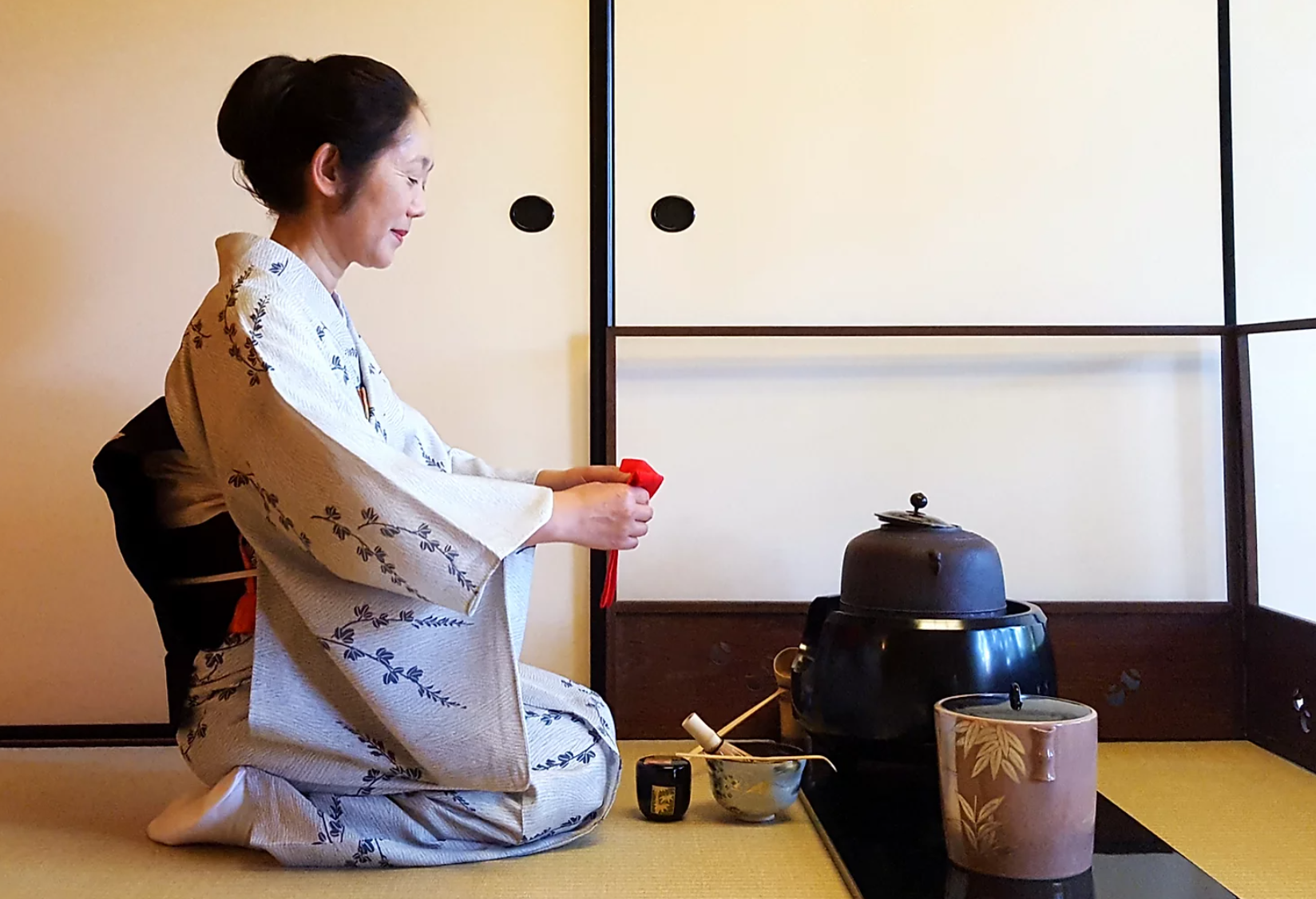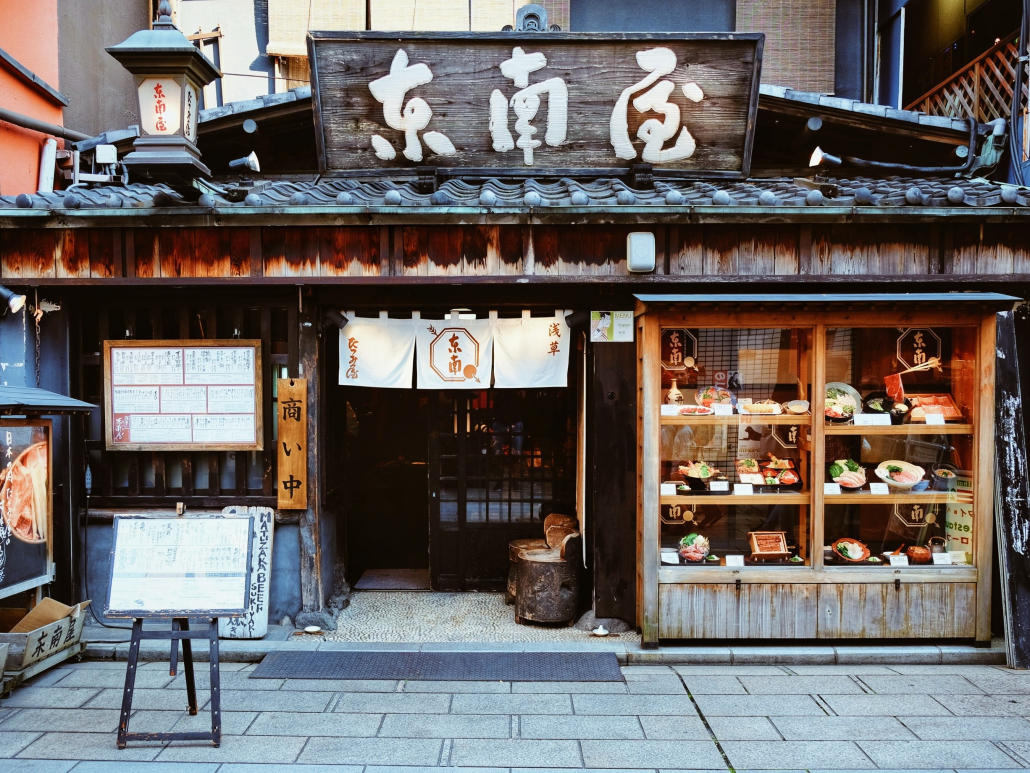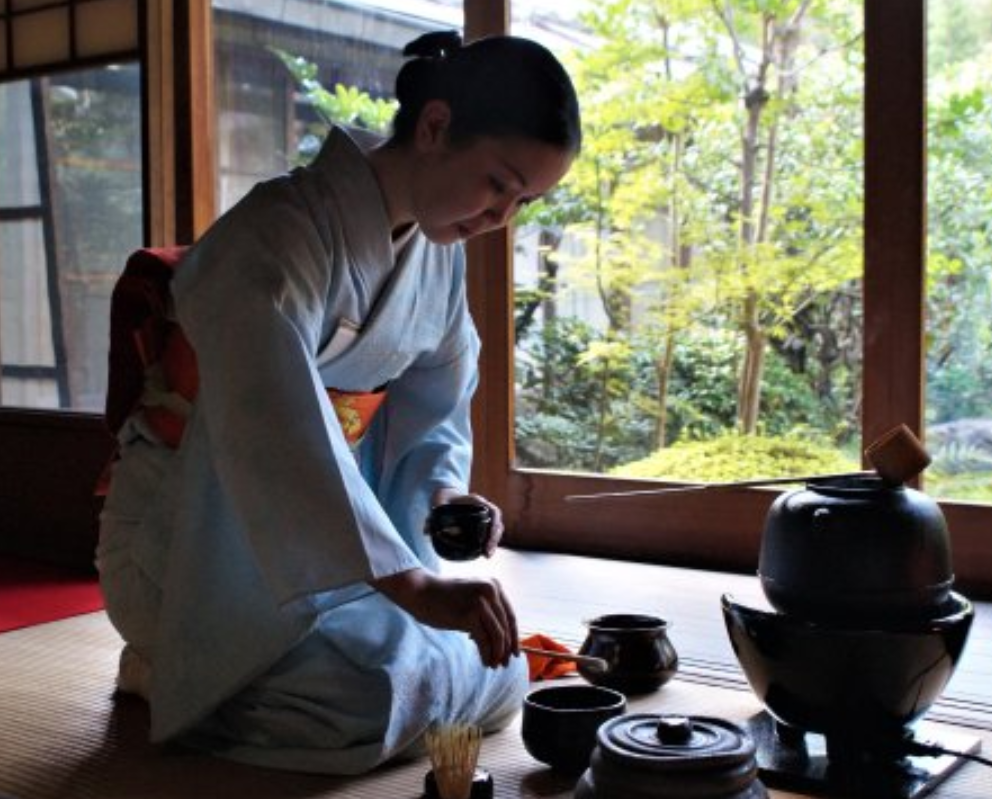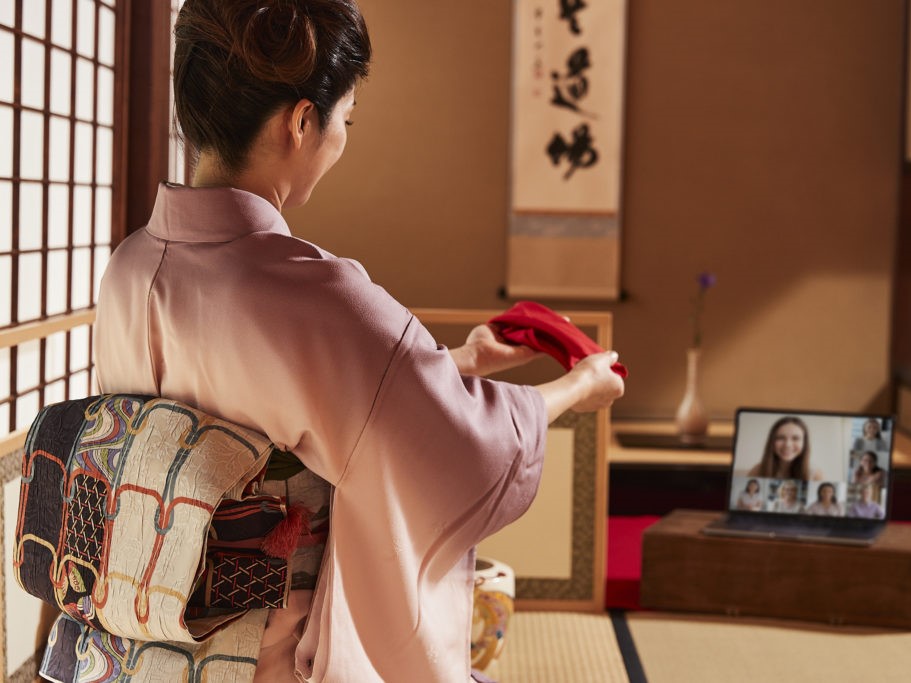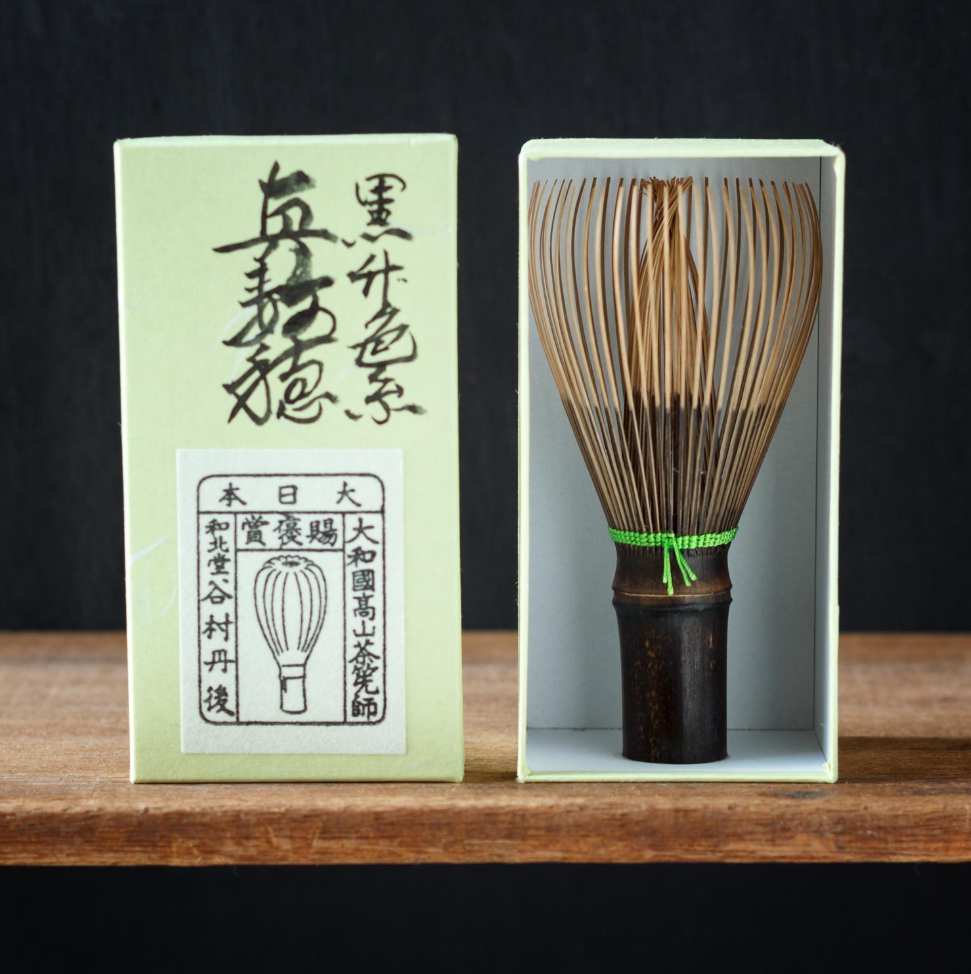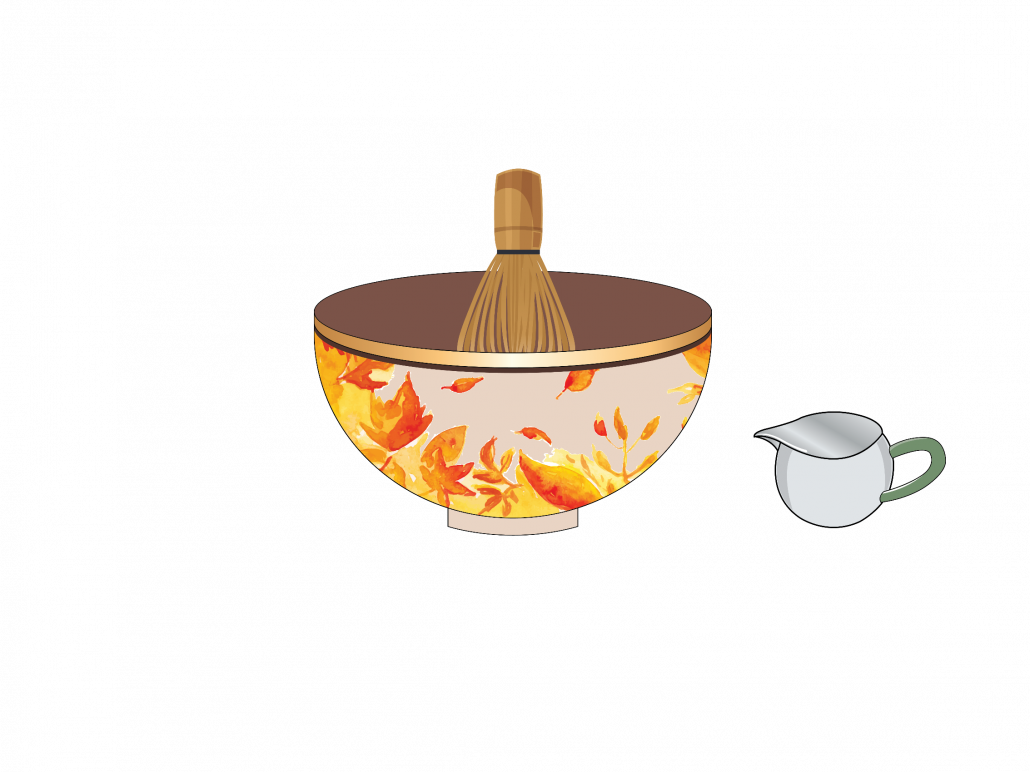Japanese Matcha
Matcha is a truly phenomenal invention. All teas use the leaves from Camellia Sinensis, but all other preparations apart from matcha rely on the fact that some of the constituents of the leaves dissolve from the leaves into the hot water in your cup. Once this has happened, most of the leaves are discarded.
Matcha is entirely different in that the leaves of the Camellia Sinensis plant are ground to a fine, green powder, and then this exquisite looking powder is dissolved in a bowl of water. In other words, when you drink matcha, you don’t just drink a few particles of the original leaf but the whole leaf.
Chado, the Way of Tea
Preparing matcha is a bit of an art (and the pun here very much intended). It does take some practice to whisk up the brew beautifully and to create the desired amount of froth. The right Japanese utensils will help, and once you have successfully prepared 60ml-70ml of the liquid at the perfect temperature, you’ll be rewarded with a very astonishing yet deeply satisfying 3.5 gulps (Yes, matcha is not drunk in bucket loads but with typical Japanese restraint) of a zen-loaded tea experience. [It already starts with the fact that you have to leave your sword outside the tea hut]. Japanese tea masters hone their skills for years (after which time they all uniformly claim that a life is not long enough to reach perfection) in a process known as chado in order to enhance their guests’ enjoyment of matcha and matcha preparation.
Japanese Tea Ceremony for the Swiss
Chado by Mukai-san
The amount of effort that can go into matcha making for a guest is absolutely staggering and there is nobody in Switzerland who better embodies the qualities it takes to prepare such tea than Mukai-san.
In 1988, Soyu Yumi Mukai reached Tea Master grade at the prestigious Urasenke School of Tea in Kyoto. In 2002, she opened Isshin-an, the first Japanese tea room in Zurich. In 2014 she reached Professor Grade at Urasenke, and in 2019 the Japanese foreign minister himself presented her with an award for her outstanding deeds. In 2020, she retired from Isshin-an but she promised to continue to teach the Japanese way of tea: Chado.
Japanese Tea Ceremony for Tourists in Japan
Tea House Guide by Katie Lockhart
Here is an introductory guide to tea houses in Japan, including a few do’s and don’ts: A Guide to Traditional Tea Houses in Japan by Katie Lockhart
Tea Ceremony for Tourists in Kyoto
The Camellia Tea House has two tea ceremony rooms. One in the Kiyomizudera region without a garden (Camellia Flower) and a more private one near Ryoanji with garden (Camellia Garden). As a tourist, you are bound to visit both areas.
Camellia Covid-19 special
(2020/Spring-summer 2021) Japan is virtually closed to foreigners trying to travel to the island and most of the otherwise densely-packed tourist destinations are empty. While this makes what some Kyoto residents call “The Kyoto of the 1940s”, tourist-orientated places are trying out new formats to reach out to customers in order to buffer the long-term effect. This has led to an online format of the demonstration Japanese Tea Ceremony offered to tourists. Phones or computers would have been absolutely unthinkable in the chashitsu before, but now several tea houses offer an electronic glimpse into their hitherto highly traditional world.
- Online Tea Ceremony
- Japanese Covid-19 masks for international shipping: Camellia mask shop
Maikoya
With branches in Osaka, Kyoto and Tokyo, Maikoya can offer a whole suite of experiences from cooking to caligraphy, origami, geisha, samurai, kimono, tea ceremony, kimono tea ceremony that are all worth checking out. (https://mai-ko.com/ or watch video teaser here).
Some of their Japanese tea ceremony events are tailored to Japanese people with an interest in this centuries-old tradition while sessions for foreign travellers have been thoughtfully adapted to tourists from abroad.
Maikoya Covid-19 special
(2020/Spring-summer 2021) Japan is virtually closed to foreigners trying to travel to the island and most of the otherwise densely-packed tourist destinations are empty. Even for Japanese, travel to certain areas is heavily restricted, but the team at Maikoya have developed online lessons to continue spreading Japanese culture and the tea ceremony in particular:
- Online Japanese Tea Ceremony (This can be booked for one person, but you can also invite friends to the same zoom event and share the experience).
- Series of 10 Sessions (Learn how to fold the Fukusa & how to whisk matcha in style – and really start to marvel at the seemingly infinite number of intricate details a tea master has learnt to pay attention to in order to provide you a chawan of matcha).
Under the well-known Japanese ichi go ichi e motto, Maikoya will create special moments and unforgettable experiences for you.
When booking, please note that:
Swiss time = Japanese time – 8h in winter
Swiss time = Japanese time – 7h in summer
Tango Tanimura
20th generation chasen master. (His family tradition, it is thought, even stretches back to the time before Sen No Rikyu). It is possible to take a chasen making tour in Nara nr. Kyoto with Tanimura-san.
The more elaborate chasen come in a box. Removing them usually destroys the lower end of the box and, as a consequence, there is often a little bit of paper and glue left sticking to the handle of the chasen. Yuko-san from Koto Tea suggests that the handle be immersed into hot water for a few minutes, and then it should no longer be difficult to remove any residues.
Please click here if you have any leftover matcha that you are looking to put to good use.
Please click here if you find yourself in the somewhat steep and lengthy process of working out how to create the perfect foam on your matcha. Warning: You MUST NOT click this link if you are a Tea Master or if you follow one of the Japanese tea ceremony schools such as Urasenke, Omotesenke or Mushanokojisenke.
Please do not click here, or at least never tell anyone you clicked here, and certainly let never anyone know if you own a charaku. It is probably the most shocking gadget ever invented in tea.
(The picture at the very top is one of the stunning inventions by Reka Nagy, a Hungarian translator, who used to work for the Japanese company Tsujiri in London before she went on to aptly-named My Cup of Tea, and then relocated to Taiwan).
